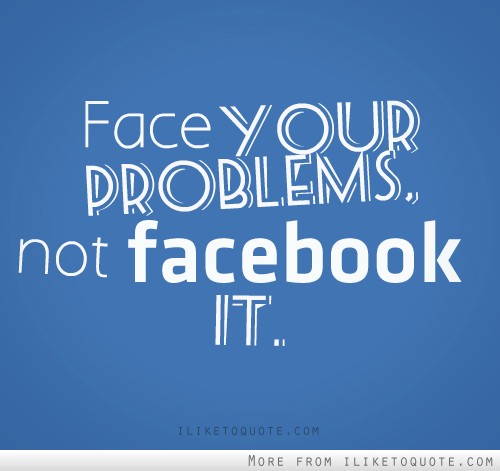Finally, a book that shows the full picture of the impact of the word of mouth and marketing done right – both offline and online.
In The Face-to-Face Book, released just days after Friday’s Facebook IPO, Ed Keller and Brad Fay celebrate the “social wave rolling across business the world of business today,” while making a case that that the most powerful forms of social influence still happen “face-to-face.”
It’s a perspective that everyone interested in building social business should read. If you want to understand the true impact of your marketing, pick up this book—you are in for a great ride!
Often times I am asked: “What is your favorite social network?” My answer is: “A table and a couple of chairs!” My answer astonishes people and catches them off guard. After all, I am supposed to be a social media advocate and an innovator in this space… And here I am not even talking about Facebook, Twitter, Pinterest or such.
The reason is simple. Social media allowed us unprecedented opportunities in building relationships with our customers and our peers from all over the world; it brought us closer than ever. This is a gift! But as marketers we sometimes have a tendency to focus on the latest new thing or a new shiny object and dismiss the whole picture. Digital is hot, yes! And it is full of extraordinary opportunities. But it is only a part of the picture. There is still a physical world out there that is dominantly responsible for your business’s success.
The Face-to-Face Book is based on a large and ongoing research project by the company founded by the authors, the Keller Fay Group. They have been tracking online and offline conversations through a survey they have conducted every day of the year for six years. Study participants keep track of their conversations about product categories and brands for 24 hours, and then provide detail accounts of where they talked, with whom, and whether the conversations was positive or negative about a brand or company.
Their critical finding is that 90% of conversations still happen offline, and that those conversations are more positive and more credible than conversations that happen in social media. They also find that traditional as well as digital media and marketing—TV commercials, brand websites, product packages, print and online articles like this one, point of sale activity—are responsible for a large amount of the conversations people have. Online social media may be good at connecting people, but it’s not the source of most of the things people talk about every day.
One of the most important messages, to me, is that we need to think about social consumers and what motivates them. This means finding out the stories that people tell (online and offline) and where our brands fit; target the right conversations and build relationship with advocates. Only then should we focus on the best channels to reach people. Social marketing is about people, not technology.
The book also features relevant case studies and expert interviews. The CMO of General Mills, Mark Addicks, says that owned media like the Betty Crocker website and product packages are the most important drivers of consumer engagement. And Jon Bond, former principal of the ad agency Kirshenbaum and Bond, who long ago advocated a “word of mouth advertising” strategy that resulted in Wendy the Snapple Lady who gave a megaphone to everyday consumers by reading their letters to the company in TV commercials.
The Face-to-Face Book is part of a growing body of work—from David Brooks, E.O. Wilson, Daniel Goleman, Malcolm Gladwell—that says people make decisions based on emotion and social influence. But this book provides insightful and relevant case studies (and marketing implications) that shows that we as marketers need to change the way brands are marketed and sold.
In professing that “all media are social,” Keller and Fay show that online social networking tools are most effective when they are integrated with other, more traditional, forms of media and marketing. Examples of successful integrated social campaigns include the Man Your Man Could Smell Like from P&G’s Old Spice and Kimberly Clark’s UbyKotex launch.
While I’m probably more bullish than the authors about the potential for social networks or blogs to drive brand advocacy and sales for major brands, I love the well rounded approach taken by the authors and am finding myself talking about the book with my friends and peers—both online and offline.
Originally Posted in The Huffington Post
Social marketing is about people, not technology. Click To Tweet Their critical finding is that 90% of conversations still happen offline, and that those.. Click To Tweet Often times I am asked: “What is your favorite social network?” My answer is: “A table and a... Click To Tweet
